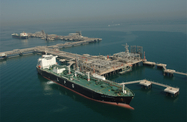Efforts by Abu Dhabi to position itself as a leader in the clean energy sector received a boost in early June, when the International Renewable Energy Agency (IRENA) opened its global headquarters in the emirate’s clean tech-focused free zone, Masdar City.
Unveiling the new building, named the greenest office in the UAE, IRENA’s director-general Adnan Amin voiced confidence that his organisation’s base in Abu Dhabi would become the new global centre of renewable energy development and policy. “Now we have a place that can become the nerve centre of what’s happening with renewables around the world,” said Amin. The move comes more than six years after the site was first selected, with the UAE pledging to support the agency with a grant of $136m over a six-year period.
Among Abu Dhabi’s aims for the sector is to raise the contribution made by renewables to 7% of total power production by 2020, attract higher levels of investment and bring about greater acceptance of alternative energy as a mainstream power source.
The emirate already operates a large-scale, 100-MW solar power facility, which ranks among the biggest of its kind worldwide. Located in western Abu Dhabi and built at a cost of $600m, Shams-1 is majority-owned by Masdar, which is a wholly owned subsidiary of the Mubadala Development Company − a government-owned investment firm. Masdar has a mandate to “advance renewable energy and sustainable technologies through education, R&D, investment, commercialisation and adaptation”.
Facilitating the funding
A report issued in March by the National Bank of Abu Dhabi (NBAD), which analysed financing options for the industry, said the potential for investment in renewables was considerable, provided lenders were willing to extend credit for longer terms rather than seek quick returns. It also highlighted investment in segments other than generation projects, such as infrastructure, research and development (R&D) and technology services. In its findings, NBAD said it expected demand for energy in the Gulf region to treble in the next 15 years.
Abu Dhabi’s push to position itself as the region’s renewables centre will see R&D for the sector given greater emphasis, while technology production and services are also expected to gain a higher profile. The shift will lay the groundwork for the alternative energy sector to assume a more prominent position within the finance industry’s portfolio in the coming years.
Building investor confidence
Ahmad Belhoul, CEO of Masdar, believes lenders are becoming more accepting of renewable energy. Confidence, he suggests, is increasing as the sector becomes more established and matures.
“In the past, one of the most difficult challenges the industry faced was the fact that banks were not comfortable lending for a term that matched the length of a power purchasing agreement (PPA),” he told OBG. “However, that has changed significantly as the renewable industry has matured and financial institutions have become more familiar with the market.”
A steady improvement in technology will also influence investors, along with economies of scale, which are developing as larger renewable energy projects take root. The past six years have brought a 70% fall in renewable energy technology costs, helping to push down installation rates, which are flowing through to electricity tariffs. The emergence of new renewable energy plants, meanwhile, has helped to bring production and sales costs more in line with those of conventional sources, according to a report issued by IRENA earlier this year.
Investment in renewables is all the more appealing, despite the current dip in oil prices, said Belhoul. “Oil and gas prices rise and fall. That is what commodities do. But the cost of renewable energy is predictable and provides a hedge against this volatility. In addition, renewable energy is a technology, which means its cost will steadily decline and its performance will continue to optimize,” he added.

